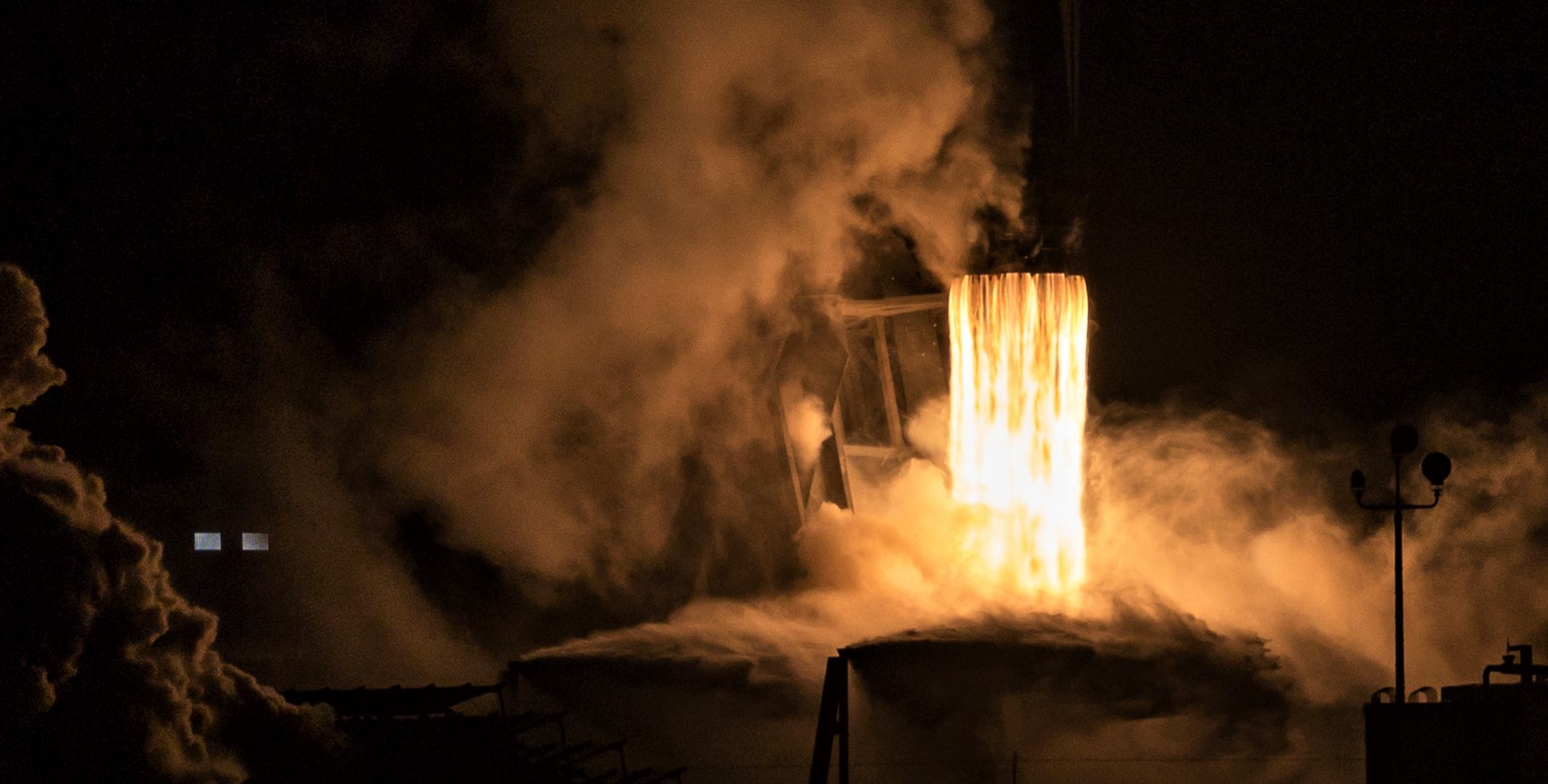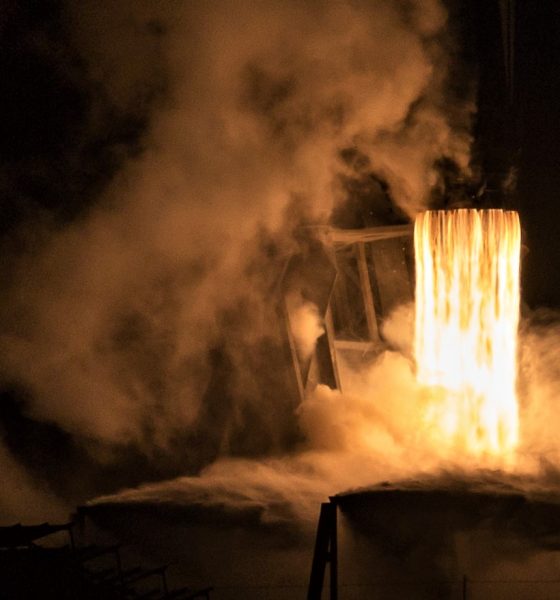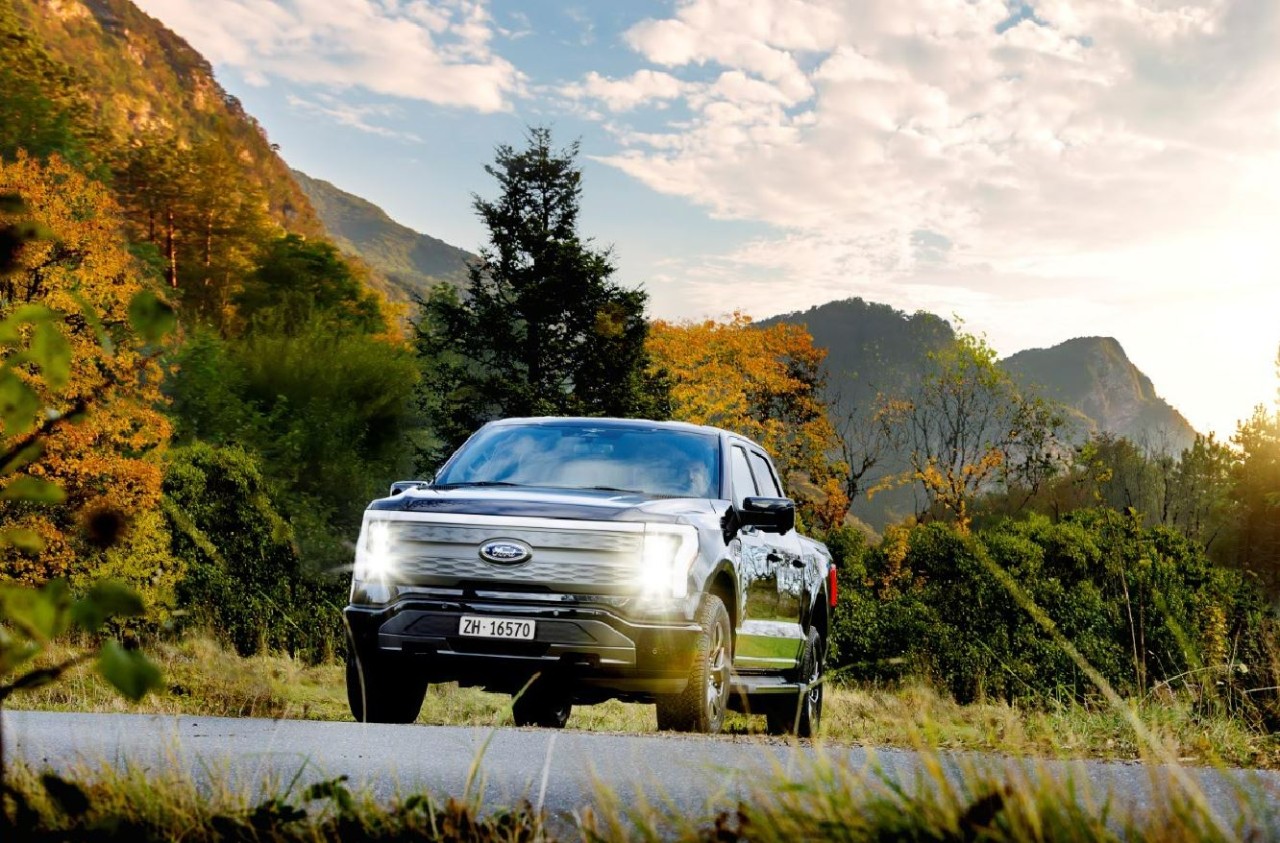

News
SpaceX static fires Falcon 9 with satellites on board for the first time in years
SpaceX has successfully completed a Falcon 9 static fire ahead of Starlink’s first dedicated launch, breaking a practice that dates back to Falcon 9’s last catastrophic failure to date.
That failure occurred in September 2016 around nine minutes before a planned Falcon 9 static fire test, completely destroying the rocket and the Amos-6 communications satellite payload and severely damaging Launch Complex 40 (LC-40). Since that fateful failure, all 42 subsequent Falcon 9 and Falcon Heavy satellite launches have been preceded by static fire tests without a payload fairing attached. This process typically adds 24-48 hours of work to launch operations, an admittedly tiny price to pay to reduce the chances of a rocket failure completely destroying valuable payloads. With Starlink v0.9, SpaceX is making different choices.
When supercool liquid oxygen ruptured a composite overwrapped pressure vessel (COPV) in Falcon 9’s upper stage, the resultant explosion and fire destroyed Falcon 9. Perhaps more importantly, the ~$200M Amos-6 satellite installed atop the rocket effectively ceased to exist, a loss that posed a serious threat to the livelihood of its owner, Spacecom. Posed with a question of whether saving a day or two of schedule was worth the potential destruction of customer payloads, both customers, SpaceX, and their insurers obviously concluded that static fires should be done without payloads aboard the rocket.
The only exceptions since Amos-6 are the launch debuts of Falcon Heavy – with a payload that was effectively disposable and SpaceX-built – and Crew Dragon DM-1, in which Falcon 9’s integration with Dragon’s launch abort system had to be tested as part of the static fire. Every other SpaceX rocket launch since September 2016 has excluded payloads during each routine pre-flight static fire.


SpaceX’s Spacecraft Emporium
Why the change of pace on this launch, then? The answer is simple: for the first time ever, SpaceX is both the sole payload/satellite stakeholder and launch provider, meaning that nearly all of the mission’s risk – and the consequences of failure – rest solely on SpaceX’s shoulders. In other words, SpaceX built and owns the Falcon 9 assigned to the mission, the 60 Starlink test satellites that make up its payload, and the launch complex supporting the mission.
Even then, if Falcon 9 were to fail during an internal SpaceX mission, customer launches could be seriously delayed by both the subsequent failure investigation failure and any potential damage to the launch complex. In short, although an internal mission does offer SpaceX some unique freedoms, it is still in the company’s best interest to treat the launch like any other, even if some customer-oriented corners are likely begging to be cut. Additionally, the loss of SpaceX’s first dedicated payload of 60 Starlink satellites could be a significant setback for the constellation, although it may be less significant than most would assume.

This is not to say that SpaceX won’t take advantage of some of the newfound freedom permitted by Starlink launches. In fact, CEO Elon Musk has stated that one of SpaceX’s 2019 Starlink missions will become the first to reuse a Falcon fairing. Additionally, SpaceX is free to do things that customers might be opposed to but that the company’s own engineers believe to be low-risk. Notably, Starlink missions will be an almost perfect opportunity for SpaceX to flight-prove reusability milestones without having to ask customers to tread outside of their comfort zones.
The sheer scale of SpaceX proposed Starlink constellation – two phases of ~4400 and ~12,000 satellites – means that the company will need all the latent launch capacity it can get over the next 5-10 years, at least until Starship/Super Heavy is able to support internal missions. Extraordinary packing density will help to minimize the number of launches needed, but the fact remains that even an absurd 120 satellites per launch (double Starlink v0.9’s 60) would still require an average of 12 launches per year to finish Starlink before 2030.


In the meantime, thoughts of a dozen or more annual Starlink launches are somewhat premature. SpaceX’s first dedicated Starlink launch (deemed Starlink v0.9) is scheduled to lift off no earlier than 10:30 pm EDT (02:30 UTC), May 15th, and is being treated as an advanced but still intermediary step between the Tintin prototypes and a finalized spacecraft design. Still, in an unprecedented step, SpaceX has built sixty Starlink satellites for the development-focused mission, in stark contrast to the six satellites (still a respectable achievement) competitor OneWeb launched in February 2019 as part of its own flight-test program.
Check out Teslarati’s Marketplace! We offer Tesla accessories, including for the Tesla Cybertruck and Tesla Model 3.

News
Ford cancels all-electric F-150 Lightning, announces $19.5 billion in charges
“Rather than spending billions more on large EVs that now have no path to profitability, we are allocating that money into higher returning areas, more trucks and van hybrids, extended range electric vehicles, affordable EVs, and entirely new opportunities like energy storage.”

Ford is canceling the all-electric F-150 Lightning and also announced it would take a $19.5 billion charge as it aims to quickly restructure its strategy regarding electrification efforts, a massive blow for the Detroit-based company that was once one of the most gung-ho on transitioning to EVs.
The announcement comes as the writing on the wall seemed to get bolder and more identifiable. Ford was bleeding money in EVs and, although it had a lot of success with the all-electric Lightning, it is aiming to push its efforts elsewhere.
It will also restructure its entire strategy on EVs, and the Lightning is not the only vehicle getting the boot. The T3 pickup, a long-awaited vehicle that was developed in part of a skunkworks program, is also no longer in the company’s plans.
Instead of continuing on with its large EVs, it will now shift its focus to hybrids and “extended-range EVs,” which will have an onboard gasoline engine to increase traveling distance, according to the Wall Street Journal.
“Ford no longer plans to produce select larger electric vehicles where the business case has eroded due to lower-than-expected demand, high costs, and regulatory changes,” the company said in a statement.
🚨 Ford has announced it is discontinuing production of the F-150 Lightning, as it plans to report a charge of $19.5 billion in special items.
The Lightning will still be produced, but instead with a gas generator that will give it over 700 miles of range.
“Ford no longer… pic.twitter.com/ZttZ66SDHL
— TESLARATI (@Teslarati) December 15, 2025
While unfortunate, especially because the Lightning was a fantastic electric truck, Ford is ultimately a business, and a business needs to make money.
Ford has lost $13 billion on its EV business since 2023, and company executives are more than aware that they gave it plenty of time to flourish.
Andrew Frick, President of Ford, said:
“Rather than spending billions more on large EVs that now have no path to profitability, we are allocating that money into higher returning areas, more trucks and van hybrids, extended range electric vehicles, affordable EVs, and entirely new opportunities like energy storage.”
CEO Jim Farley also commented on the decision:
“Instead of plowing billions into the future knowing these large EVs will never make money, we are pivoting.”
Farley also said that the company now knows enough about the U.S. market “where we have a lot more certainty in this second inning.”
News
SpaceX shades airline for seeking contract with Amazon’s Starlink rival

SpaceX employees, including its CEO Elon Musk, shaded American Airlines on social media this past weekend due to the company’s reported talks with Amazon’s Starlink rival, Leo.
Starlink has been adopted by several airlines, including United Airlines, Qatar Airways, Hawaiian Airlines, WestJet, Air France, airBaltic, and others. It has gained notoriety as an extremely solid, dependable, and reliable option for airline travel, as traditional options frequently cause users to lose connection to the internet.
Many airlines have made the switch, while others continue to mull the options available to them. American Airlines is one of them.
A report from Bloomberg indicates the airline is thinking of going with a Starlink rival owned by Amazon, called Leo. It was previously referred to as Project Kuiper.
American CEO Robert Isom said (via Bloomberg):
“While there’s Starlink, there are other low-Earth-orbit satellite opportunities that we can look at. We’re making sure that American is going to have what our customers need.”
Isom also said American has been in touch with Amazon about installing Leo on its aircraft, but he would not reveal the status of any discussions with the company.
The report caught the attention of Michael Nicolls, the Vice President of Starlink Engineering at SpaceX, who said:
“Only fly on airlines with good connectivity… and only one source of good connectivity at the moment…”
CEO Elon Musk replied to Nicolls by stating that American Airlines risks losing “a lot of customers if their connectivity solution fails.”
American Airlines will lose a lot of customers if their connectivity solution fails
— Elon Musk (@elonmusk) December 14, 2025
There are over 8,000 Starlink satellites in orbit currently, offering internet coverage in over 150 countries and territories globally. SpaceX expands its array of satellites nearly every week with launches from California and Florida, aiming to offer internet access to everyone across the globe.
Currently, the company is focusing on expanding into new markets, such as Africa and Asia.
News
Tesla Model Y Standard stuns in new range test, besting its Premium siblings
Tesla’s newer vehicles have continued to meet or exceed their EPA estimates. This is a drastic change, as every 2018-2023 model year Tesla that Edmunds assessed did not meet its range estimates.

The Tesla Model Y Standard stunned in a new range test performed by automotive media outlet Edmunds, besting all of its Premium siblings that are more expensive and more luxurious in terms of features.
Testing showed the Model Y Standard exceeded its EPA-estimated range rating of 321 miles, as Edmunds said it is the “longest-range Model Y that we’ve ever put on our loop.” In the past, some vehicles have come up short in comparison with EPA ranges; for example, the Model Y’s previous generation vehicle had an EPA-estimated range of 330 miles, but only drove 310.
Additionally, the Launch Series Model Y, the first configuration to be built in the “Juniper” program, landed perfectly on the EPA’s range estimates at 327 miles.
It was also more efficient than Premium offerings, as it utilized just 22.8 kWh to go 100 miles. The Launch Series used 26.8 kWh to travel the same distance.
It is tested using Edmunds’ traditional EV range testing procedure, which follows a strict route of 60 percent city and 40 percent highway driving. The average speed throughout the trip is 40 MPH, and the car is required to stay within 5 MPH of all posted speed limits.
Each car is also put in its most efficient drive setting, and the climate is kept on auto at 72 degrees.
“All of this most accurately represents the real-world driving that owners do day to day,” the publication says.
With this procedure, testing is as consistent as it can get. Of course, there are other factors, like temperature and traffic density. However, one thing is important to note: Tesla’s newer vehicles have continued to meet or exceed their EPA estimates. This is a drastic change, as every 2018-2023 model year Tesla that Edmunds assessed did not meet its range estimates.
Tesla Model Y Standard vs. Tesla Model Y Premium
Tesla’s two Model Y levels both offer a great option for whichever fits your budget. However, when you sit in both cars, you will notice distinct differences between them.
The Premium definitely has a more luxurious feel, while the Standard is stripped of many of the more premium features, like Vegan Leather Interior, acoustic-lined glass, and a better sound system.
You can read our full review of the Model Y Standard below:
Tesla Model Y Standard Full Review: Is it worth the lower price?








